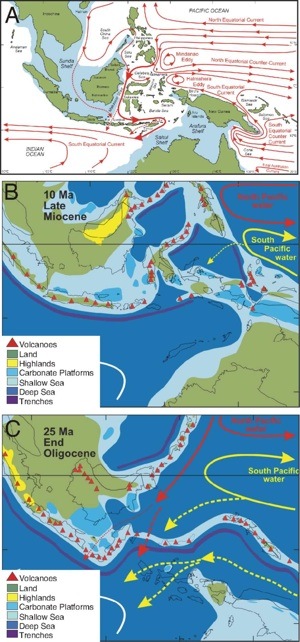
Coral reefs and associated shallow-water habitats support the most diverse and productive marine ecosystems on Earth and are of enormous socio-economic value. However, coral reef systems are under increasing threat from a range of natural and man-made disturbances, and determining the response of marine ecosystems to anthropogenic environmental change is a critical research priority for both Life and Earth Scientists. Ecologists studying modern reefs are faced with the dilemma that they have few baseline data to model the impact of predicted environmental change. However, some useful baseline information is available in fossil record, particularly for shallow marine ecosystems such as coral reefs. Environmental change is a pervasive part of earth history, and modern reef-building corals have survived repeated and varied episodes of past environmental change. Documenting the ancient dynamics is essential to the understanding of tropical ecosystems and requires a large-scale interdisciplinary approach.
SE Asia contains the most diverse terrestrial and shallow marine biota on Earth, yet the factors responsible for the origins and maintenance of this diverse biota remain unknown. Molecular phylogenetic studies suggest that most extant taxa evolved during the Miocene. However, the fossil evidence currently available to document this pattern and its geographic context is sparse, and primarily consists of small collections of fossils and publications from the late nineteenth and early twentieth centuries. The existing data demand taxonomic and stratigraphic revision to accommodate advances in these fields over the past century, but most importantly there is a crucial need to collect new data.
SE Asia contains the modern-day Indonesian Throughflow (ITF). The ITF is the last remaining equatorial oceanic gateway, allowing heat transfer as water flows from the Pacific into the Indian Ocean, and is a major influence on global climate. The long-term history of the ITF is controlled by the complex plate tectonic history of the region. Throughout the Cenozoic era, SE Asia has been characterized by convergence of the Indo-Australian and Philippine-Pacific Plates with the stable Asian Craton, and at around the Oligocene-Miocene transition (~25 Ma) the Australian Plate impacted on the Philippine Sea Plate resulting in restrict deep throughflow and initial constriction of the ITF (Palaeogeographic reconstructions courtesy of Robert Hall, Royal Holloway University of London)
Is it a coincidence that the most diverse biota on earth occurs in a geologically dynamic region that also contains a major control of the global climate? There is evidence that these phenomena are related via long-term changes in coral reef ecosystems in the region. Previous studies suggest that three important changes occurred near the Oligocene-Miocene transition in SE Asia, including (1) constriction of deep-water flow through the ITF, (2) onset of extensive regional coral reef development, and (3) formation of the ancestral centre of diversity by increased speciation or immigration. The overall aim of the THROUGHFLOW research programme is to determine the precise relationship among these three events using a multidisciplinary approach.

